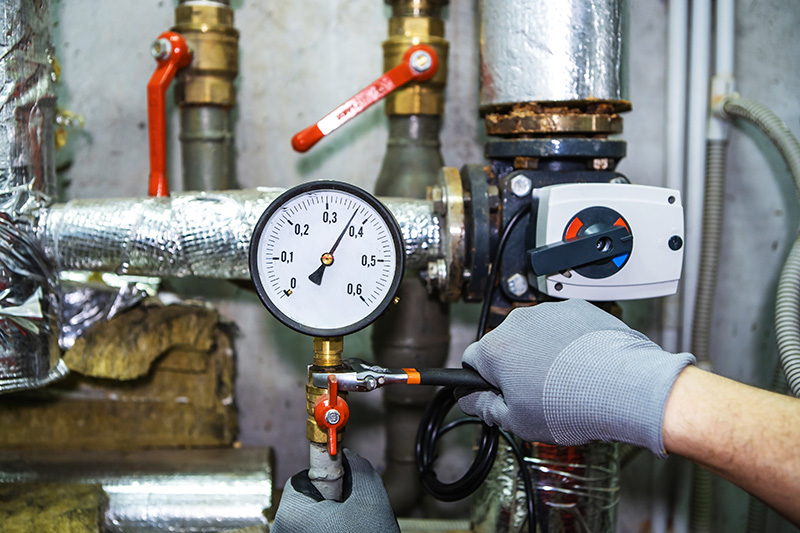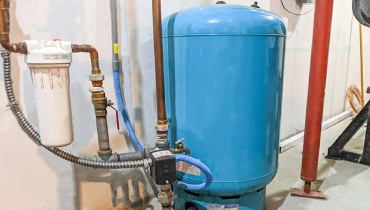Swift Remedies for Solving Low Water Pressure in Your Home
Swift Remedies for Solving Low Water Pressure in Your Home
Blog Article
Just how do you really feel about Dealing with Low Water Pressure in Your Home?

Low water stress in your home can be an irritating problem, affecting whatever from showering to washing meals. If you're experiencing weak water circulation, there are a number of feasible causes and services to discover. In this overview, we'll talk about typical reasons for low water pressure and useful actions to attend to the concern effectively.
Introduction to Low Water Pressure
Low tide pressure occurs when the flow of water from your taps, showers, and other fixtures is weaker than normal. This can make daily jobs extra challenging and much less efficient. Comprehending the reasons for low tide stress is vital to finding the best remedy.
Typical Root Causes Of Low Water Pressure
Pipe Obstructions
With time, pipes can end up being clogged with natural resource, debris, or debris, limiting the flow of water. This is an usual issue in older homes with galvanized steel pipelines.
Corrosion
Deterioration within pipes can result in leaks and reduced water stress. Rust build-up can restrict water circulation, particularly in aging plumbing systems.
Faulty Stress Regulators
Pressure regulatory authorities are responsible for keeping consistent water stress in your house. If they malfunction, it can lead to low water stress or irregular circulation throughout your home.
Community Water Supply Issues
Occasionally, the issue lies outside your home. Community water system problems, such as main line leakages or upkeep job, can briefly decrease water stress in your location.
Just How to Identify Low Tide Stress
Inspecting Faucets and Components
Start by testing the water pressure at various faucets and components throughout your home. If the problem is isolated to particular areas, it may suggest localized issues.
Evaluating Pipes
Examine noticeable pipelines for indications of leakages, corrosion, or clogs. Take notice of any type of uncommon audios, such as banging or rattling pipes, which might suggest problems within the plumbing system.
Consulting with a Plumber
If you're incapable to pinpoint the cause of low water pressure, consider employing a professional plumber to carry out a comprehensive examination. They can determine underlying issues and advise proper solutions.
Do It Yourself Solutions to Take Care Of Low Tide Pressure
Cleaning Up Aerators and Showerheads
Natural resources can collect in aerators and showerheads, decreasing water flow. Eliminate and clean these components frequently to enhance water stress.
Flushing Hot Water Heater
Debris buildup in the hot water heater can restrict circulation and reduce efficiency. Purging the storage tank occasionally aids eliminate debris and maintain optimal performance.
Inspecting Pressure Regulatory Authority
Make sure that the stress regulatory authority is functioning appropriately. Adjusting or replacing the regulator can help bring back proper water stress throughout your home.
Clearing Clogs in Water Lines
For minor obstructions, try making use of a plumbing snake or chemical drainpipe cleaner to clear obstructions in pipelines. Be cautious when making use of chemicals and adhere to safety and security guidelines.
When to Call an Expert Plumber
If do it yourself initiatives fail to settle the issue or if you believe significant plumbing issues, it's finest to seek support from a qualified plumber. They have the know-how and devices to deal with intricate concerns safely and efficiently.
Safety Nets to Maintain Water Pressure
Routine Maintenance
Set up routine maintenance for your plumbing system to prevent concerns such as corrosion, leaks, and blockages. Dealing with minor problems early can assist stay clear of even more significant repair services later.
Mounting a Pressure Booster
Consider setting up a pressure booster pump to improve water stress in areas with continually low flow. This can be especially beneficial for multi-story homes or residential properties with high-demand components.
Monitoring Water Usage
Bear in mind water use routines and avoid overtaxing the plumbing system. Simple modifications, such as incredible showers and washing tons, can help keep ample water pressure.
Final thought
Taking care of low water pressure can be frustrating, however recognizing the underlying reasons and carrying out suitable options can restore optimal flow throughout your home. Whether it's cleaning aerators, checking pipelines, or consulting with a plumber, taking positive steps can make certain a constant supply of water for your day-to-day needs.
FOUR WAYS TO FIX LOW WATER PRESSURE NOW
Turning on a shower or faucet only to find the water comes out in a sad, slow drizzle is never a good feeling. How exactly are you supposed to wash a pan or take a quick shower when it takes 10 minutes just to rinse off a little soap? The good news is that when your water pressure is bad, there's always a cause: typically one that can be easily fixed. Here are some of the most common causes of low pressure and what you can do to fix the issue:
DEBRIS AND MINERAL DEPOSIT BUILDUPS
If you notice low water pressure from just one or two of the fixtures in your house, the problem likely has to do with debris buildup. Water is full of minerals and other debris, all of which can accumulate in your pipes and on your fixtures. This can cause a blockage that affects how much water flows through. To fix this, try filling a small plastic bag with white vinegar, and use a rubber band to hang it around your showerhead or faucet. Let the head of the fixture soak for a few hours, and the vinegar should loosen the deposits.
WATER LEAKS
Leaks are another common cause of low water pressure. If water is flowing out of your plumbing through a hole or crack before it can reach your fixture, the pressure coming out of the faucet or showerhead will be lower. A plumbing professional is your best bet for finding and repairing a leak in your water supply pipes.
Leaks are another common cause of low water pressure. If water is flowing out of your plumbing through a hole or crack before it can reach your fixture, the pressure coming out of the faucet or showerhead will be lower. A plumbing professional is your best bet for finding and repairing a leak in your water supply pipes.
FOUR WAYS TO FIX LOW WATER PRESSURE NOW
Turning on a shower or faucet only to find the water comes out in a sad, slow drizzle is never a good feeling. How exactly are you supposed to wash a pan or take a quick shower when it takes 10 minutes just to rinse off a little soap? The good news is that when your water pressure is bad, there's always a cause: typically one that can be easily fixed. Here are some of the most common causes of low pressure and what you can do to fix the issue:
DEBRIS AND MINERAL DEPOSIT BUILDUPS
If you notice low water pressure from just one or two of the fixtures in your house, the problem likely has to do with debris buildup. Water is full of minerals and other debris, all of which can accumulate in your pipes and on your fixtures. This can cause a blockage that affects how much water flows through. To fix this, try filling a small plastic bag with white vinegar, and use a rubber band to hang it around your showerhead or faucet. Let the head of the fixture soak for a few hours, and the vinegar should loosen the deposits.
WATER LEAKS
Leaks are another common cause of low water pressure. If water is flowing out of your plumbing through a hole or crack before it can reach your fixture, the pressure coming out of the faucet or showerhead will be lower. A plumbing professional is your best bet for finding and repairing a leak in your water supply pipes.
Leaks are another common cause of low water pressure. If water is flowing out of your plumbing through a hole or crack before it can reach your fixture, the pressure coming out of the faucet or showerhead will be lower. A plumbing professional is your best bet for finding and repairing a leak in your water supply pipes.
A VALVE ISSUE
If you have low water pressure throughout your home, check your main shut-off valve to make sure it's completely open. You may also want to see if there's a pressure-reducing valve installed. If there is, have a plumber help you adjust the settings to get the pressure you're looking for.
OTHERS USING WATER
Believe it or not, your low water pressure could be caused by your neighbors. If you notice low pressure at certain times of day, it may be because you and the people living next to you have similar schedules - when everyone is showering at the same time, the pressure will be lower in every home. Low pressure throughout the neighborhood may also be caused by an issue with your municipal water supply. If that's the case, call the supplier to see if they're working on the issue.
https://www.rotorooter.com/blog/water-leaking/low-water-pressure-fixes/

We were introduced to that article on 10 Reasons for Low Water Pressure in Your House from an acquaintance on our other site. Sharing is good. You won't know, you may very well be helping someone out. Thanks a lot for your time. Don't forget to check our site back soon.
Call Report this page